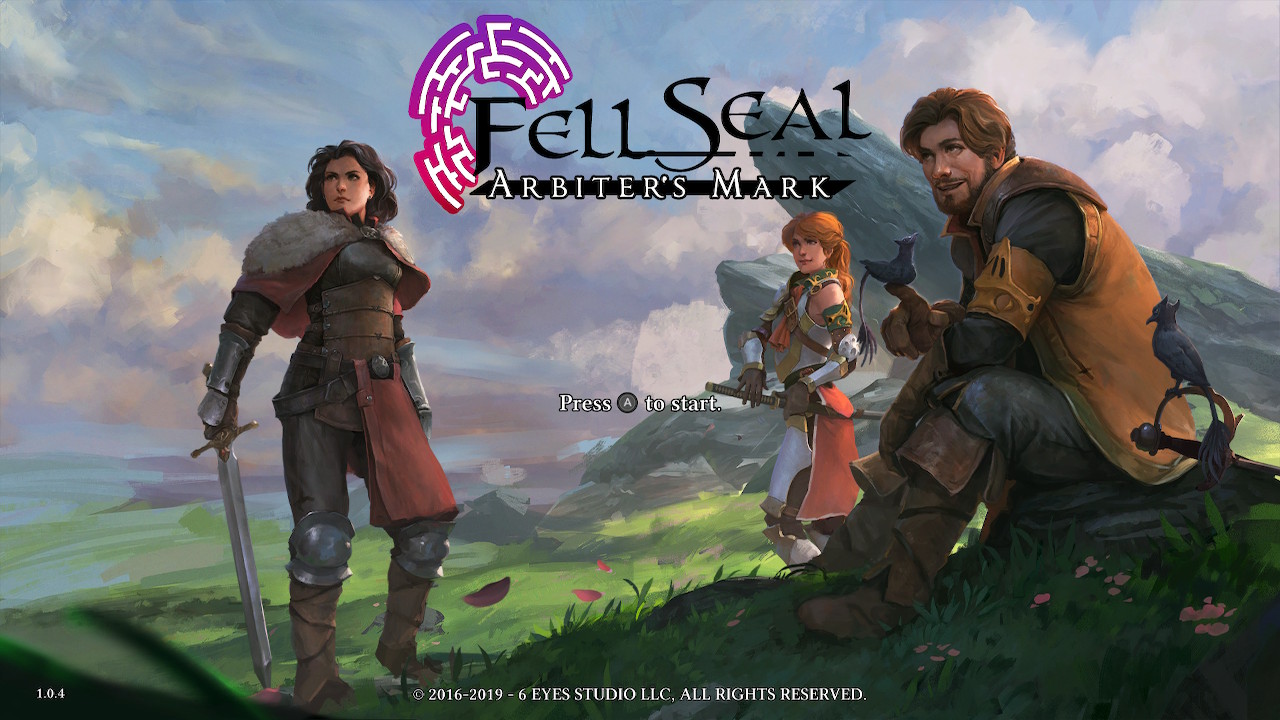Fell Seal: Arbiter’s Mark
Nintendo Switch
Developed By: 6 Eyes Studio
Published By: 1C Entertainment
Category: Role-Playing, Strategy
Release Date: 08.14.19
The first strategy RPG I ever played was Final Fantasy Tactics for the PSX; it’s still my favorite Final Fantasy game to this day. I loved the robust – but not tedious – class system, the battle system with just the right amount of depth to be strategically satisfying but not bogged down in byzantine rules, and – most of all, really – the way the game weaved a personal, compelling story into a grand narrative of a continent at war. Call me crazy, but I think the developers of Fell Seal: Arbiter’s Mark for the Nintendo Switch feel the same way. Not only do they name-check FFT in their press, but the battle and class systems should be awfully familiar to anyone who has fond memories of Ramza’s saga. Heck, even the world map works pretty much the same, just with a much more convenient way to handle random battles. So I know I like the game system, which means pretty much the only thing that could turn me away from this title is the story.
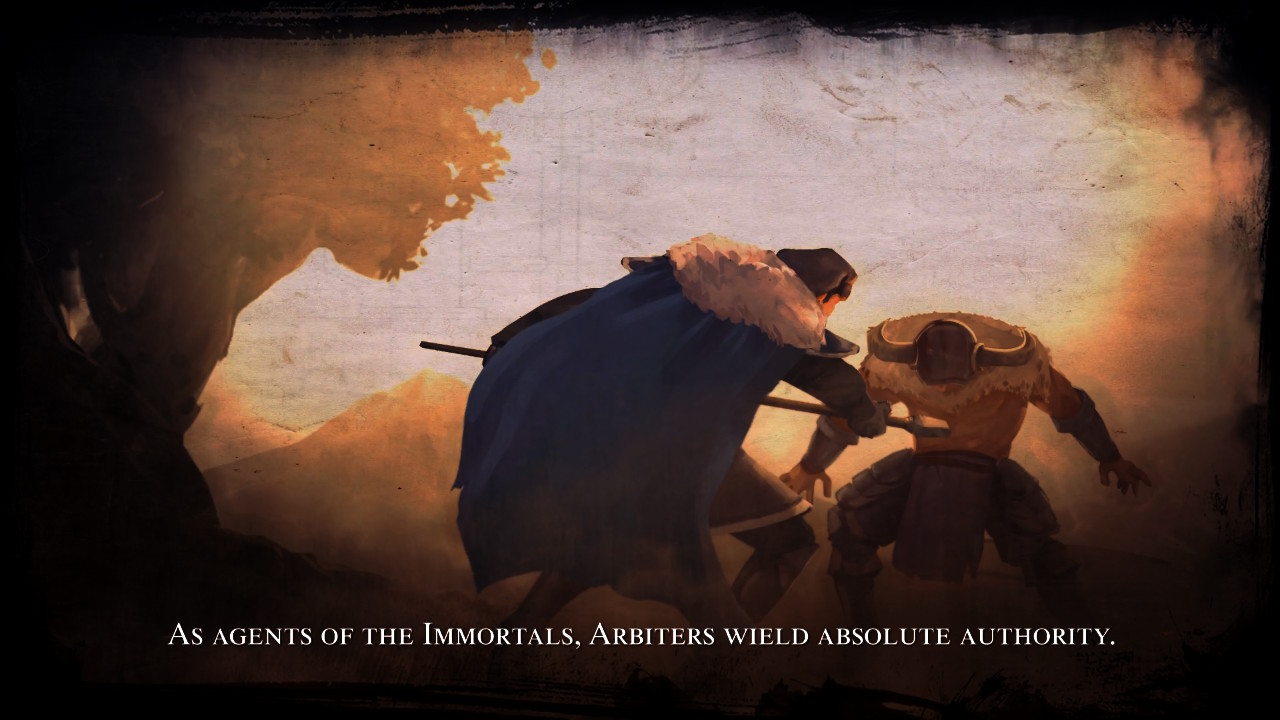
Spoiler Alert: The Game Didn’t Turn Me Away
I mean, it took a few missions for me two get used to Kyrie and her companions, but once I was hooked, I was hooked. Let’s start at the beginning: the game opens with Kyrie, a type of independent law officer called an Arbiter, and her apprentice, Anadine, witnessing a murder. They arrest the man responsible, a nobleman with an entirely-too-high opinion of himself. They can’t really turn the man in to the local Arbiter chapterhouse due to suspicions of corruption; you see, certain factions of the Arbiters have developed a less-than-stellar reputation of late. Her attempt to seek justice for this one murder draws Kyrie into a web of secrets surrounding the Arbiters and their ruling council, the Seven Immortals.
We’ll cut off the spoilers there (and really, that just barely scratches the surface of the game; that’s about three of the game’s 40-plus missions), but I do want to praise the way the story unfolds. Like its inspiration, FFT, Fell Seal wastes no time getting its story rolling. A lot of games spend too much time building their lore in the beginning, which can get a little dry. Fell Seal starts the story with action and intrigue, and fills in the lore as needed along the way – and trust me, there’s plenty of lore to love. In a very short period, Fell Seal very naturally introduces a good chunk of its world’s history and culture, building a fascinating fantasy world full of magic and intrigue.
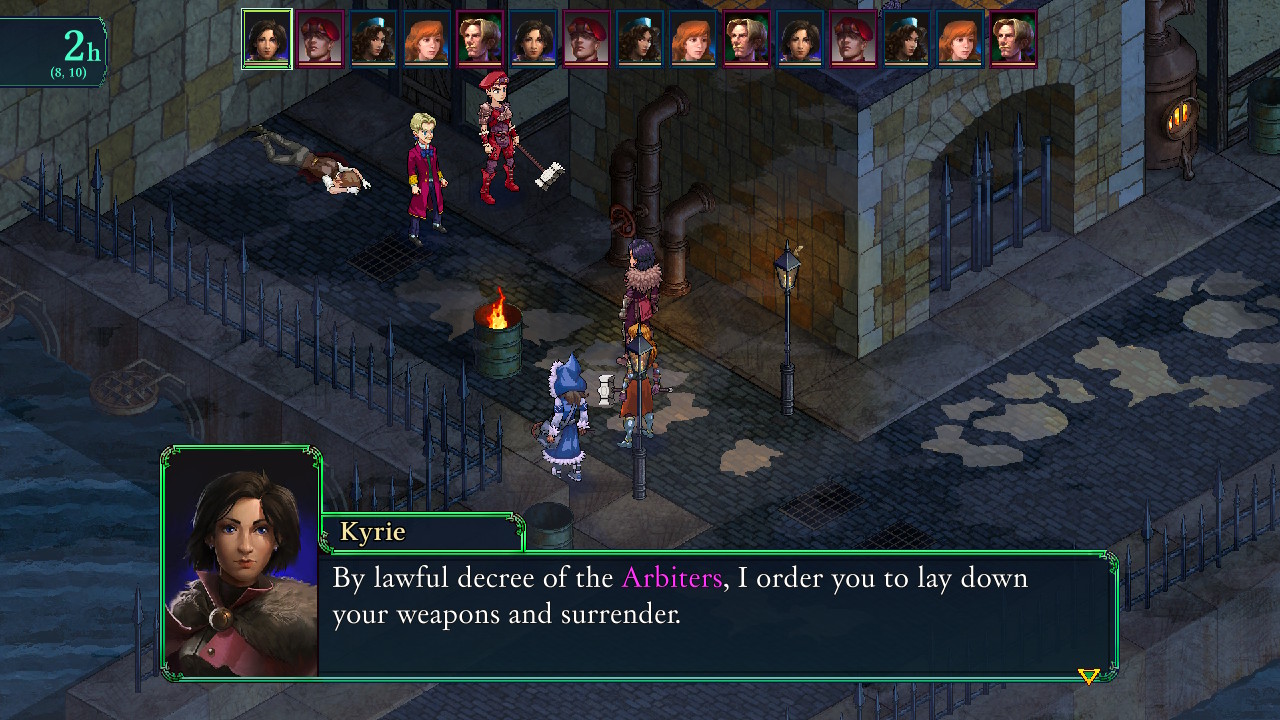
Finally, A Fantasy With Tactics
When I say the game resembles Final Fantasy Tactics, I am perhaps understating things. The combat, character class, ability, equipment, shop, menu, and world map systems are almost identical. Battles take place on a grid map from an isometric perspective, and players must maneuver their units around the board to attack enemies from advantageous angles. You get a bonus for attacking from the sides or back, so trying to get a positional advantage against your enemies is a huge part of the game’s strategy. Environmental factors like height and terrain also affect your units, so you have to account for that, too. You have your usual skills ranging from physical attacks to special skills, healing magic to offensive spells, and the familiar range of buffs and debuffs. There may not be a lot of originality in the combat system, but I’m a big proponent of the “if it ain’t broke, don’t fix it” school of thought. Just because it’s not especially innovative, doesn’t mean it isn’t fun and satisfying.
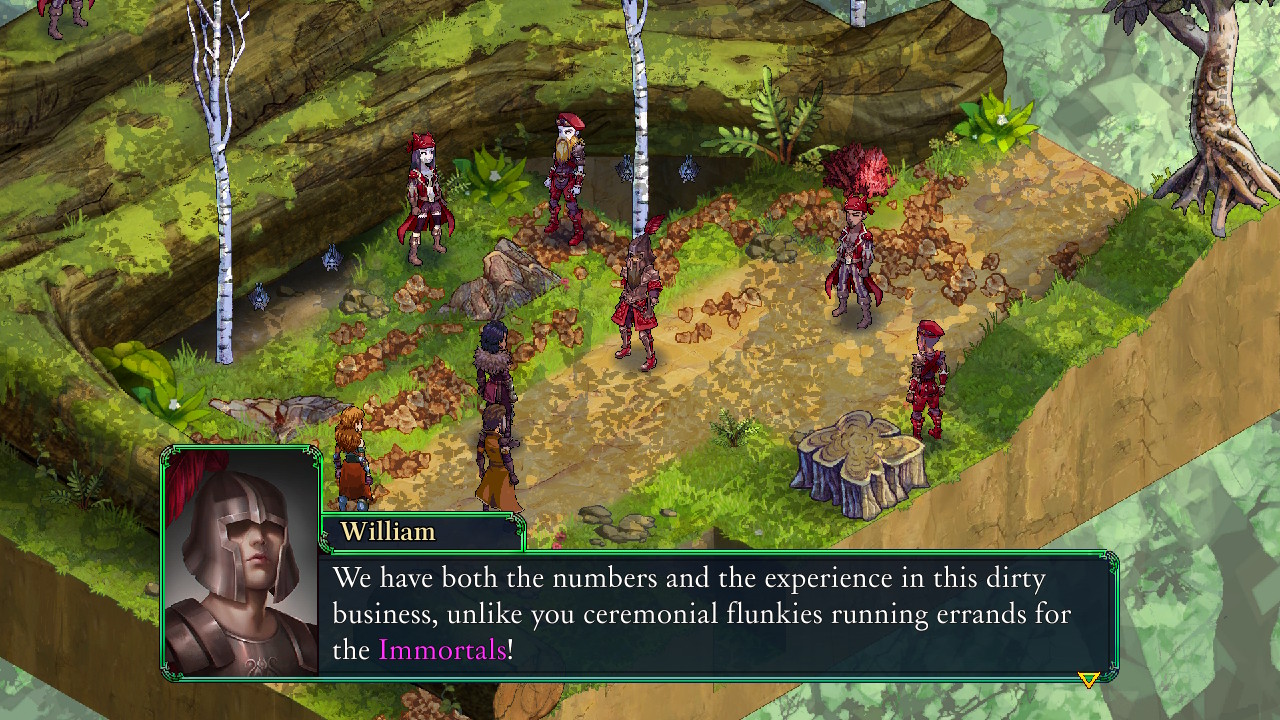
Kyrie’s Companions
Your characters gain experience points individually whenever they perform an action, which allows them to level up – a shocking development for an RPG, I know. Your characters also gain ability points that can be used to learn new abilities in their class’s ability tree – a lot like Job Points from FFT. The difference, however, is that while experience points are gained individually, ability points are awarded evenly to any character that took place in the battle. Characters that did not fight get a smaller portion of ability points, and no experience. It’s a pretty cool take on the FFT formula, as it allows for support characters to progress in their classes at the same rate as your more active fighters. Getting new skills like buffs for your healers helps them keep up with your fighters from a level progression perspective. It’s just an interesting wrinkle to character progression that ensures none of your characters get left too far behind.
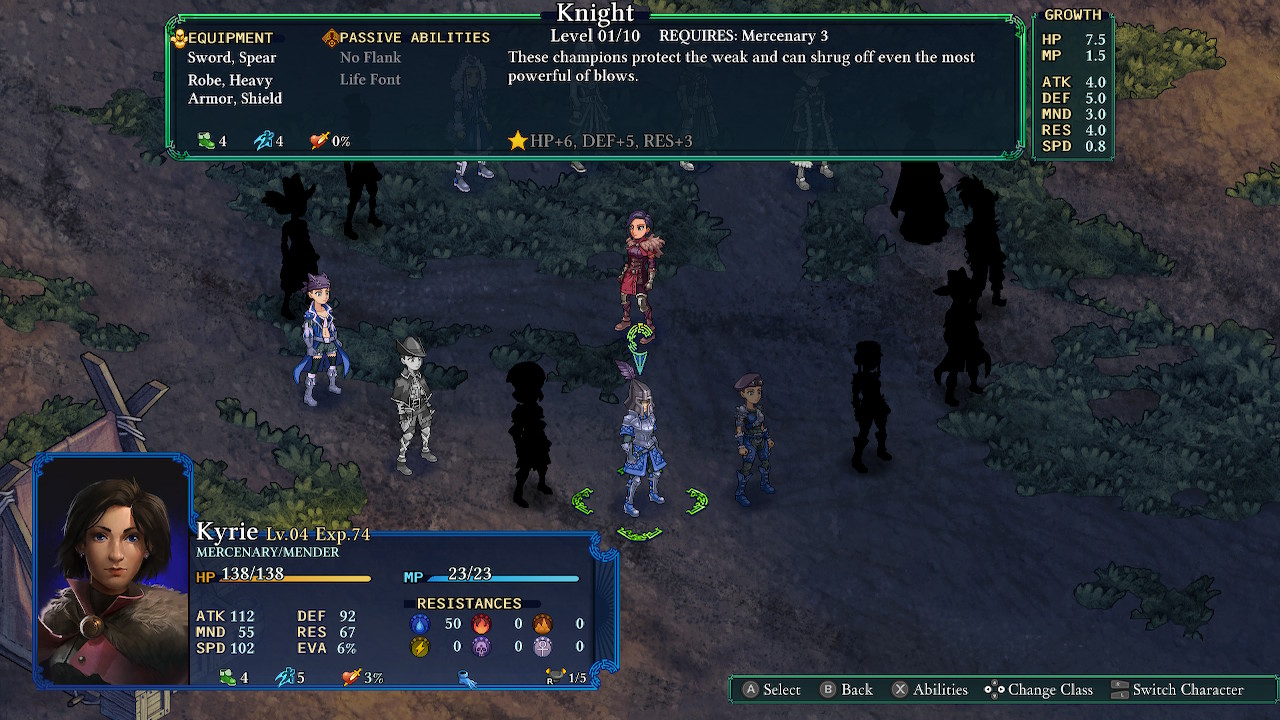
Squad Logistics
In addition to the game’s combat and character progression, Fell Seal: Arbiter’s Mark fills out its strategic portions with equipment management. Buying, selling, and equipping new items works the same it does in every other RPG you’ve ever played. You go to a store and buy it, then equip it. Another thing the game borrows from FFT is the fitting room concept; you can go from character to character, putting on new weapons in the shop and when you complete the purchase, the new equipment will be automatically equipped. As always, it’s just a very convenient time-saving feature for keeping your characters outfitted with the most powerful weapons and armor available.
Fell Seal does do two things to differentiate itself from its predecessor in regards to its inventory management, however; the first is its item management system. You don’t have to restock potions or remedies between missions, like you have to in many other SRPGs. Instead, every item you have has a set number of uses per battle, and your item stock regenerates after every mission. It makes managing your money easier, but it does create a little bit more of a conflict about item conservation. If you only have two potions to use, you get a lot more conservative about how you’re going to use it. Luckily, items can be upgraded to have more uses, which brings us to Fell Seal’s other, very welcome addition to item management: crafting! Defeating enemies and completing missions will often net you ingredients, which you can use to upgrade your held items, craft new items, and forge new accessories and equipment. You can even craft badges, which grant your characters access to special new classes! As far as crafting systems go, it’s fairly basic, but I don’t really need or want an overly complicated crafting system anyway, so I actually count that as a positive.
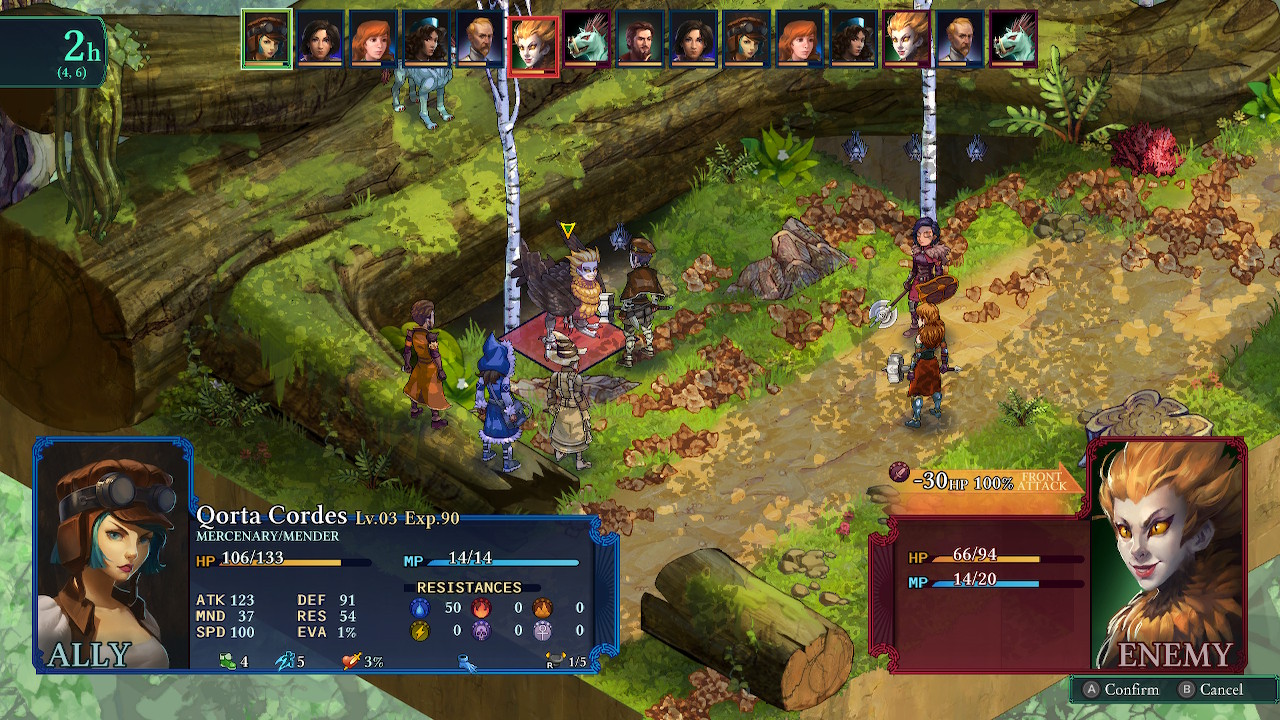
Finding Your Place in the World
The final component of the game is the world map. Like Final Fantasy Tactics, the world map is literally a map, with different points connected by roads representing your many destinations. There are cities and field areas. Cities contain shops, guilds for hiring new soldiers, and sometimes a special area like an arena. Field areas are generally where story missions occur, and once a story mission occurs you can patrol an area. Patrol is a fantastic idea that takes the place of random battles in the game; I can’t tell you how many times I was playing FFT and in the middle of a long trek for a supply run I kept running into unwanted random battles. Now we don’t have to worry about that at all, and I couldn’t be happier about it. You can grind when you want, and not get bogged down in it if you don’t. I love this feature. Finally, you will sometimes see a “!” on a map location, and this is an indication that there is a special optional scene that can be viewed at that location. These events are generally not necessary for the main story, but they often provide amusing or insightful character moments which round out the cast nicely.
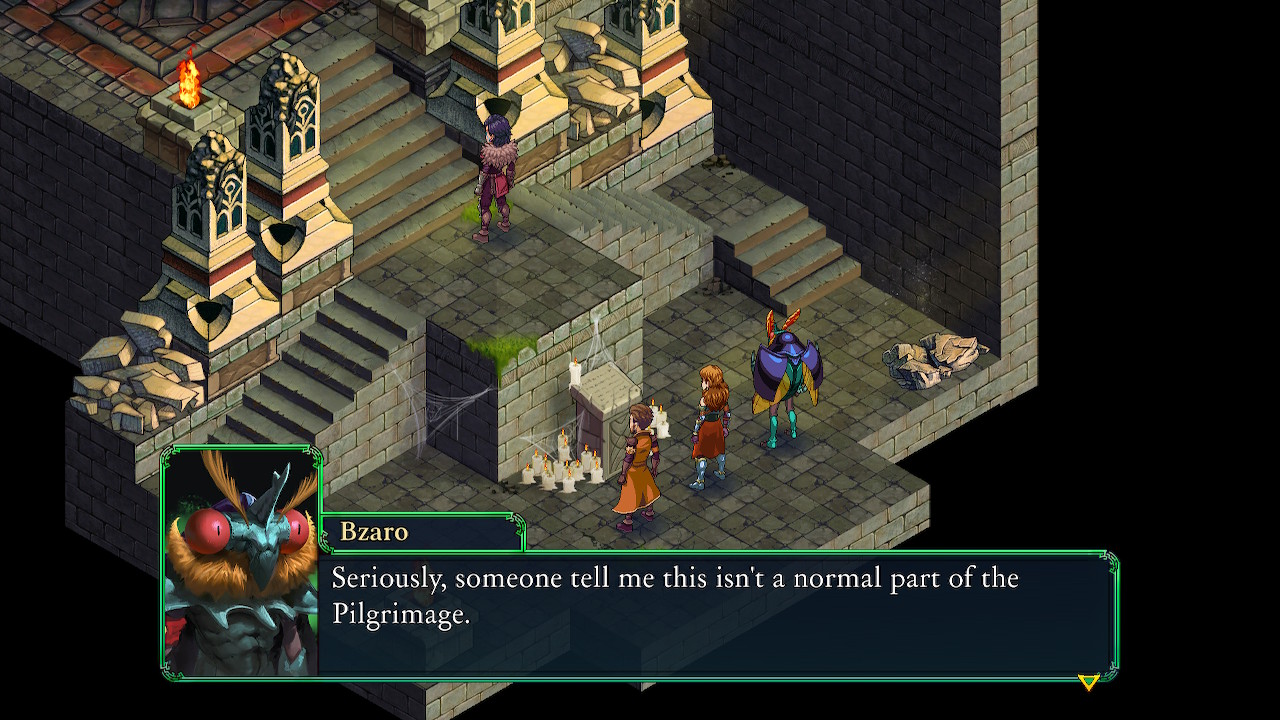
Marked by Greatness
The character sprites and backgrounds in Fell Seal: Arbiter’s Mark almost don’t fit together. The characters have a bit of a 32-bit inspiration to them; while they’re definitely not the cutesy, chibi-style sprites of FFT, there is something reminiscent of that legendary game’s influence to be seen in them. The backgrounds look like they belong to an entirely different game: they have a gorgeous, hand-drawn style to them that uses fewer stark lines and a softer color palette. After a few missions everything started to look like it fit together, but for a little while the contrast in styles was pretty jarring. It’s not that it looks bad, really, it’s just surprising to see two totally different art styles coexisting.
The music definitely takes its cues from the score composed by Hitoshi Sakimoto and Masaharu Iwata for the original Final Fantasy Tactics. It’s full of orchestral tracks that are equally intrepid and tense. Composer Jan Morgenstern has created a grand, sweeping soundtrack that accentuates everything that makes the game and the story work. The music is another of the game’s may highlights.
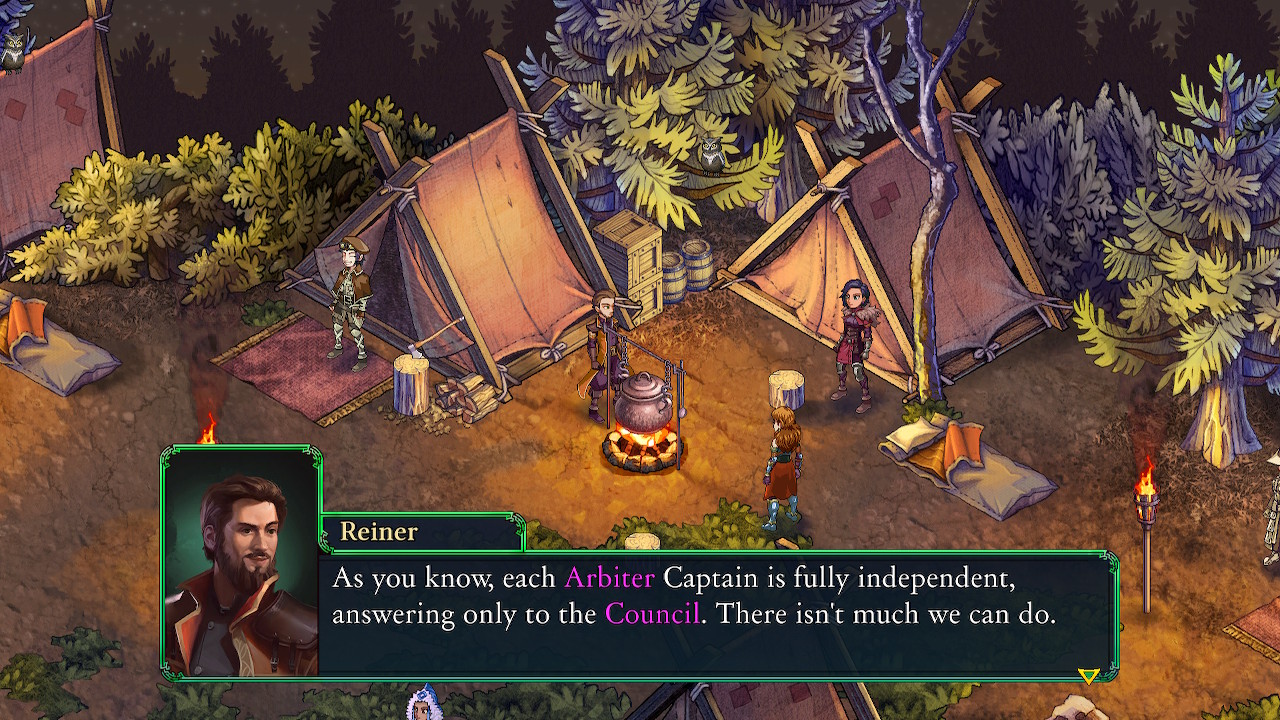
Playability
Fell Seal: Arbiter’s Mark doesn’t make use of the Switch’s touch or motion controls, and frankly that’s fine. I think the touch controls may have been cool to experiment with in handheld mode, but I mostly played this one docked so I could get that full console feel and maybe a nice little nostalgia bump from playing it the same way I originally played my favorite SRPG of all time. I do think the graphics looked nicer on my TV, as well; not that it looked terrible on the Switch’s screen, but the character sprites looked more pixelated and there was a minor loss of resolution in the backgrounds, too. What I’m saying is, play this one docked.
TL;DR: It may have started development as an homage to Final Fantasy Tactics, but it quickly grew into a unique, compelling experience in its own right.





Buy Fell Seal: Arbiter’s Mark
$29.99
Follow 6 Eyes Studio
Follow 1C Entertainment

[Review] KONOSUBA – God’s Blessing on this Wonderful World! Love For These Clothes Of Desire! – Nintendo Switch

Developed By: MAGES. Inc. Published By: PQube Categories: Visual Novel…

